What Data Do You Need To Organize Multichannel Campaign?
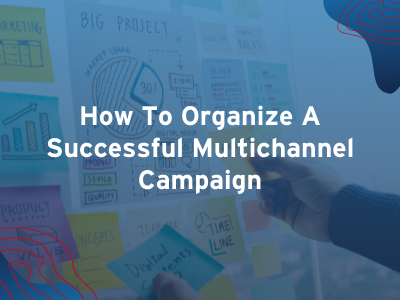
The key to any marketing campaign is having a well-thought-out strategy. This is especially true when planning a multichannel campaign because there are more moving pieces. What information do you need to build an effective campaign strategy? And what’s the best way to organize a successful campaign?
Why does starting with the right information impact success levels?
The right information is the fuel. There’s always a chance a poorly planned (or spray and pray) campaign may yield results. However, like putting regular gasoline in a diesel truck, you may think you are getting somewhere, but it’s just going to blow up in your face. 💥
Not only does starting with the right data and a plan give you a chance for success, but it also allows you to measure that success. Without a strategy, there’s no way to track or judge something’s effectiveness.
There are questions to ask yourself that give you the right information to build a campaign.
- Who are you targeting?
- How are you targeting them?
- What is your message?
- How are you tying your channels together?
- What data are you gathering?
- When and how are you retargeting?
Breakdown of the steps

Step 1: The Who
How do you figure who to target? The easiest way to decide who to target is to figure out what is your buyer persona. Or if you already have buyer personas, which one to use for this campaign.
Here are the questions to ask yourself to find the fundamentals of your “who.”
- What are their basic demographics?
What gender to they identify as? How old are they? Where do they live? What is their relationship status? Are they educated? - What do they do for work?
What’s their job title and description? But more than that, are they a decision maker? What do they influence at work? - What are their interests?
Do they have hobbies or interests? What do they do in their free time? Are they part of a community? - What do they want and why can’t they have?
This a big thing for figuring out what you can do to help them! What are their goals and dreams? What are their pain points? Like, what keeps them up at night? - Why wouldn’t they buy from you?
What’s stopping them from buying from you? What objections may they have? - What ways would they prefer to interact with you?
Do they use social media? Do like a particular social media? Is a phone call the best way to reach them?

Step 2: The How
Now that you know who, you probably know what marketing channels are most effective for marketing to them. Then you just need to decide what channels to use for the campaign you are planning.
How do you decide what channels to use? The most important thing is that it what’s your target audience responds to.
Other important factors to consider:
- Your budget
- What step in the sales process is this campaign

- How many channels do you want to use
Step 3: The What
What is your message? How will you modify that message for the different channels?
The What needs to be third because Who you are talking to and How you are talking to them informs the decision about messaging. For example, if you are planning on using social media as a channel, then your tone needs to be more informal and your content to be more entertaining.

Step 4: Integration
How are you going to integrate or tie the channels you are using together? Will customers interact with channels in a specific order? What type of interacts do you want your customers to have with these channels? Is there a path you want your customers to follow?

Step 5: Data gathering
Before your campaign starts, it’s important to know what data you want to learn from it. Do you want to learn data about your customers?
Other important data to track is what are the metrics you are going to use the rack the effectiveness of this campaign. Is this a branding play campaign and impressions are most important? Are email opens relevant data?
Step 6: Retargeting

Retargeting should not be an afterthought of your campaign. Any retargeting or (remarketing) should be planned out and integrated into your original campaign strategy.
Having a strategy for marketing campaigns is extremely important. However, actually planning the campaign doesn’t need to be overwhelming or complicated.
What questions have you found to be important to ask yourself when planning a marketing campaign?
It’s Holiday Campaign Time… Already
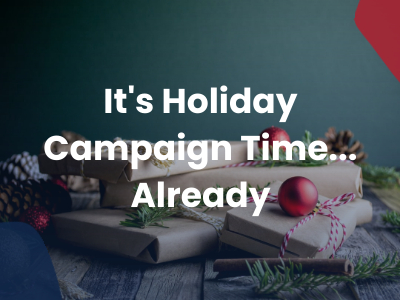
55% of consumers say that they will start their holiday shopping before Halloween this year. This means, the holiday season is here early! Consumers are worried about increased shipping times and product outages, pushing them to get their shopping done early. Americans are also expected to spend 7%-9% more this holiday season! What do you need to get your Holiday campaign set up on time?
Supply Chain and Shipping Issues
Pandemic-related shipping delays have gotten a lot better this year, but many companies are expecting large delays, due to volume, this holiday season. Also, many shipping companies’ deadline for Christmas deliveries is earlier this year. For example, FedEx’s Economy deadline is December 9th, UPS is December 16th, and USPS is the 15th. USPS also updated Holiday pricing this week on October 3rd.
Just about every part of the supply chain has been disrupted. There’s a shortages of factory workers, shortages of cargo ships and containers, large scale storms, a lack of truck drivers and warehouse employees, and retail workers. Big companies like Nike, H&M, and Ikea have already been affected.
What does this mean for you?
The best time to get started on your holiday campaign is RIGHT NOW. Especially if you are a small business; take advantage of all those big companies’ supply chain issues!
Good campaigns take time to set up and the sooner you can get your message out, the better. In the past the rule of thumb has been to have your campaign live by November 19th; however, a lot of brands have already started easing into their holiday campaigns. (Looking at you, Pottery Barn.)
What do you need to set up your holiday campaign?
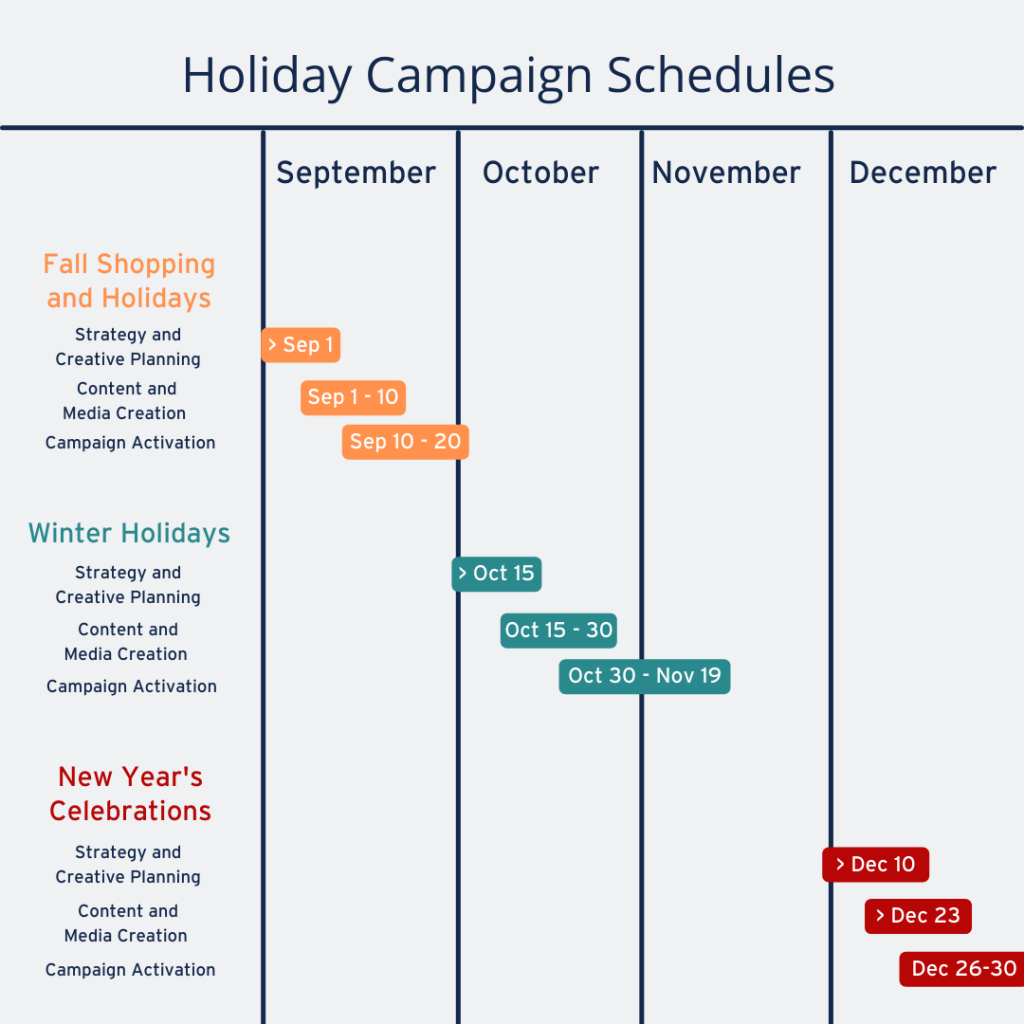
Step 1. Have a plan! That’s why it’s a campaign and not just content! A strategy is key! How do you know what should be holiday 2021 strategy? Start by asking the “why.” Why are you doing a holiday campaign in the first place? Do you have an awesome product that a lot of people would love? The next step is the campaign objectives. What do you want to specifically do you want to accomplish with this campaign? Are you trying to build brand awareness, drive traffic, or sell a specific product? Once you know what you want to accomplish, the next step is to figure out what channels and methods would be the most effective way to reach your audience.
All of these things are your strategy: the why, the what, and the how.
The next step to planning a campaign is content and message. You know what your goal is, now you make the creative that goes with it. Whether that be social content, print and mail, or digital ads, or hopefully, some combination of all the channels!
After putting your campaign out into the world, the next step is to learn. This is the data gathering and retargeting phase. A one step campaign isn’t going to be as effective as a campaign that customers on a journey.
Marketing Channel highlight: TikTok
TikTok is going to be a powerful channel this holiday season. 47% of surveyed TikTok users said that TikTok is likely to inspire a gift this year. 39% said that they discovered a product or brand on TikTok, and 77% said that they have bought things because of TikTok. TikTok is also offering incentives for advertisers to use their platform.
Do you have your holiday campaign ready to go?
What is the value of companies promoting Flow State?
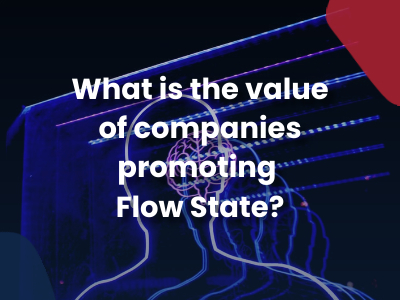
With many companies adjusting to being back in the office or a hybrid work model, employees are having to change their Flow State. What is a Flow State? (Sometimes just called Flow.) Flow is simply that state of mind in which we feel and perform our best and feel at ease. We all have systems or processes that make it naturally easier for us to access Flow. We can, however, also we can take steps that can allow us to access it.
Switching up work environments over the past year and a half has facilitated many employees having to adjust how the access their Flow State. What is the value of companies promoting Flow State? How has the changing work model impacted Flow? And how can you access your Flow State and increase productivity?
What is Flow?
Your Flow State is what is happening mentally when you are “in the zone.” It’s being fully engaged in a task. Flow was first identified and popularized by psychology researcher, Mihaly Csikszentmihalyi, from Claremont Graduate University in California. Everyone’s Flow State is different is directly connected to their effort and creativity. When you are in your Flow State, you brain is locked into process and knows exactly what it is going to do from one moment to the next.
What is the value of companies promoting Flow State?
Flow State sounds abstract and kind of like a fuzzy motivation tool. How can it actually benefit companies? The main way is that when employees are in their Flow State, they are doing their best work. Not only that, employees who work in a Flow State often gain greater satisfaction from their work and a that contributes to motivation and company loyalty. While working in a Flow State, employees have more concentrate and focus and therefore, less distractions. The clarity that comes form that leads to innovation. All of these things are qualities that make up exceptional employees.
Flow State can be broken by distraction. Employee distraction is also detrimental to companies. Microsoft’s 2020 WFH study found that before the pandemic, on average, workers felt like 52% of their day was wasted by distractions and unnecessary disturbances. A 2013 study found that employees who were frequently interrupted and dealt with a lot a distractions reported higher fatigue and burnout rates. Burnt out employees are more likely to make mistakes, call in sick, as well as look for new jobs. (As we’ve seen this year with The Great Resignation.)
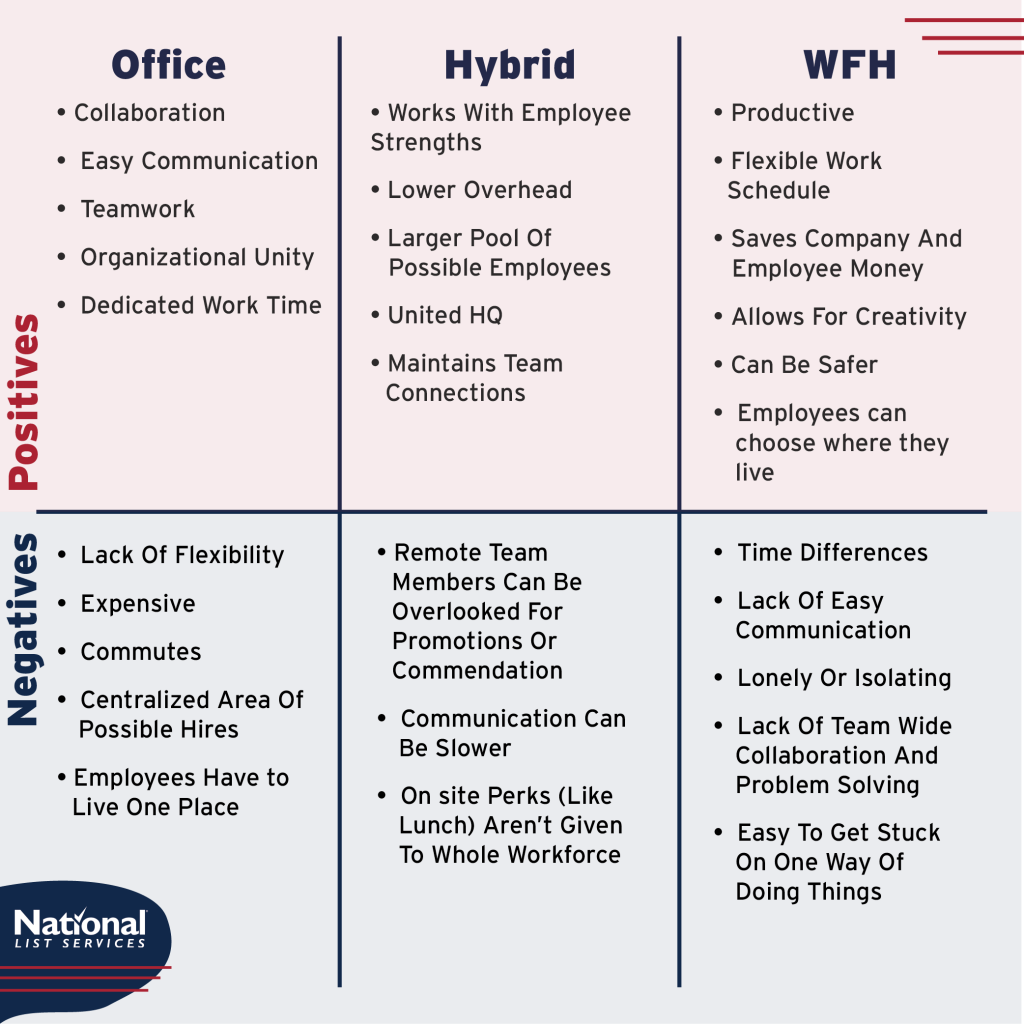
How has the changing work model impacted Flow?
One of the main advantages to a hybrid work model or allowing employees to choose weather or not they WFH, is that help each employee work in an environment that best suits them. Some employees can tap into their Flow State best in a quiet, comfortable space; weather that be at home or in the office, free of home’s distractions such as children or pets. Others like the background noise of a coffee shop. Some enjoy the collaboration of working in the office and having coworkers around them.
This year has given a lot of people an opportunity to find which type of work environment actually works best for them. Of the over 1,200 employees and 133 executives surveyed in Microsoft’s WFH study at the end of last year, 55% said they would prefer to still work remotely at least 3 days a week. And before this past year, many of those people probably wouldn’t have been given the chance to know what work environment worked best for them.
And how can you access your Flow State and increase productivity?
Here are the 2 main steps needed to tap into your flow state.
- First, you must observe yourself. For the next two weeks, observe yourself, notice what you’re doing, and look for the clues of flow: losing your sense of time or self, feeling that you’re acting with ease, gaining new insights, and having a positive feedback loop.
- Then, when you are in a state of flow, broaden your awareness: Notice and remember the activities surrounding you. Recognize what you’re physically doing and think about what you’re doing mentally.
What ways have you found to be effective in “getting in the zone” and accessing your Flow State?
An Update on… “The Apple Privacy Update”
With the upcoming release of Apple’s new Operating System and (another) Apple privacy controversy in the news this week, we thought it was a good time to bring this article back. 😜
This spring’s iOS updated promised increase security and user control for inter-app tracking and cookies. However, the changes are taking a lot longer to reach users than first promised. It seems like all the changes they announced were more for show than actually giving users more control over their personal data.
And…. on the topic of personal data: make sure you do the emergency update on your devices today! The update fixes a bug that makes the over 1.65 billion Apple devices worldwide vulnerable to Pegasus Spyware.
Pegasus spyware is particularly dangerous because unlike most spyware and malware, the user doesn’t need to click a link or open a suspicious email for it to be installed. The spyware doesn’t give the device’s user any indication that it was activated. This “zero click remote exploit” spyware was developed by Israeli cybersecurity firm NSO. The Pegasus spyware can turn a device’s microphone or camera on, and record even encrypted calls, texts, messages, and emails.
NSO has been subject to controversy in the past for it’s client list. They say that they only sell their spyware to government and organizations that meet strict human rights standards and who will use the spyware to track terrorists and criminals. However, the Pegasus spyware has been linked many times over the past couple years to organizations that do not meet those criteria.
It is interesting to see if this latest privacy controversy will impact the upcoming ios update or change Apple’s approach to large scale privacy initiatives in the future.
The (Un)Official Guide to The Apple Privacy Update
April 28th, 2021

The Apple privacy update rolling out this week that finally does what they’ve been threatening to do for a lonnnggggg time. Control over the ADFA (Apple’s Device Identifier for Advertisers) and other app tracking tools are being given directly to the users. What Apple decides to do when it comes to data privacy and marketing tools greatly impacts the entire industry.
Why? For one thing, 45.2% of smartphones users in the United States have an iPhone. Another reason is that they have marketed themselves as the company that is going to stand up for its user’s privacy and control, even if that means going against Facebook. Or the Government.
The big question is though… what does it mean for you? As a user and as an advertiser?
What does the privacy update actually do?
With the new update scheduled to go out this week, Apple is introducing a feature called “App Tracking Transparency.” What does it do? Well… it makes advertiser tracking between apps more transparent to users. Apple has made the ability to see (and change) what apps are tracking what for years. The difference now is that instead it being buried deep in settings, a pop-up window will show up on every app that tracks something or collects any data. This pop up (like the one for sharing location) will allow users to control what personal data each app has access to as well what other apps it can connect to.
What information are apps collecting/what are they collecting? Apps (and websites) can collect a surprising amount of information that users haven’t directly given them. Some apps track your physical location. They can use this information to serve you targeted ads based on where you are in the physical world. Knowing your physical location can also give you better recommendations on things “near you,” whether that be pizza for lunch or the weather forecast.
Apps also can have tracking pixels built in. These pixels can track your movement form one app or website to another. This is how you can get an ad for something you just looked at on Amazon. Amazon has a tracking pixel built into their website, they in turn take the information the pixel has collected about visitors to target them on other websites and apps.
What choice do users have now?
In the popup window, users will now be given the choice: “Allow” and “Ask app not to track.” In the past Apple has let you decide which specific elements you would allow, like only location sharing or only ADFA tracking. However, this feature appears to be all or nothing. If you “Allow” then you are giving complete access.
What happens when you say no to tracking? Apple stops giving the app access to your ADFA, stopping it from learning about you from other apps. It also tells apps that you really would rather they didn’t track or share your information in any other ways.
Why should you allow tracking?

Personalized ads are one part of the puzzle when it comes to be tracked online. As we’ve talked about in the past, personalized ads are very effective. Younger generation that have grown up online don’t tolerate non-personalized ads very well. We are constantly inundated with content and advertising, so it is easy to completely zone out advertising (in any form) that is something you are not directly interested in.
Also, many consumers now have in innate understanding of how their personal data is used to create targeted ads. Being targeted (or retargeted) based on their interests and past activities are expected. Recently surveyed consumers between the ages of 18-34, 58% said that a personalized ad helped them make a purchase decision. 42% also said that they had clicked on a sponsored ad in the last 6 months!
For a lot of us, the privacy concerns pale in comparison to function and usability of an app. A TapResearch poll conducted in August 2020 shows that 23% of iOS users are likely to opt in to sharing data with apps that request it. Another 21% of consumers are neutral on the subject, suggesting they will not opt out. Recent eMarketer research shows that 75% of consumers are willing to share their location if it enables a mobile service or saves them money. Which highlights how many users feel about personalized advertising: getting a coupon or an ad for something you were probably going to buy anyway is not a bad thing.
The Facebook Controversy
Facebook has been by far the most outspoken opponent of AppTrackingTransparency, going so far as to take-out full-page ads in newspapers and other print publications. Facebook says that AppTrackingTransparency will hurt small businesses’ ability to advertise to those in their community. And that Apple shouldn’t be able to make “unilateral decisions without consulting the industry about a policy that will have far-reaching harm on businesses of all sizes.”
Apple shouldn’t make “unilateral decisions without consulting the industry about a policy that will have far-reaching harm on businesses of all sizes.”
Facebook
In general, the consensus seems to be that Facebook is upset because of their ongoing rivalry with Apple and more importantly, this decision’s impact on their own revenue. In the months since its announcement Facebook has changed its tune a bit. Zuckerberg said in an interview in March on Clubhouse that Apple’s new privacy policy may actually help Facebook; if advertisers can’t find space across iOS apps they may turn to Facebook.
Time will tell if these changes pull advertisers more into Facebook marketing, but one thing is for sure, they have already impacted Facebooks. We were sent this by Facebook this week: “Apple released changes with iOS 14 that impacts how we receive and process events from tools like the Facebook SDK and the Facebook pixel. See updates on how these changes affect your ad account and see tasks that can help you reach your audience.” So far, the only thing we’ve seen impacted on Facebook is size audiences available. That is expected to level out though, in coming months as people re-opt-in to app tracking.

What are advertisers doing about the privacy update?
Many apps already have another type of pixel technology built into them called “Fingerprinting.” Fingerprinting has been developed recently to combat this end of cookie era. Fingerprinting works by collecting seemingly unimportant data from your device such as screen resolution, phone model, and current operating system, and combining it into a way of recognizing your unique device. Much like actual finger printing, fingerprints match to fingerprint, not a name, address, phone number etc. This allows advertisers to target you with ads without knowing who you actually are, thus getting around any data privacy issues.
There are many tools becoming available that do similar things. Tools like Household Level Identifiers that don’t target specific people. Apple has given advertisers time to come up with solutions, so we will probably see more options in the coming months and years.
So, what do you think? Do the advantages of AppTracking outweigh the privacy costs?
Have you seen any evidence of increase privacy for personal data?
The Value of the Social Proof Phenomenon
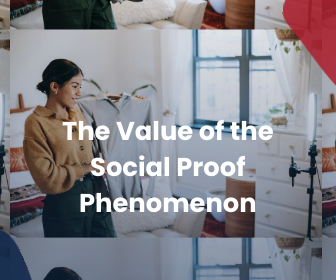
The Social Proof Phenomenon is a foundation piece of how our culture buys now. Between Instagram Influencers, Yelp reviews, and 5 star Amazon products, most of us make purchase decisions on the value others see in the product. How can Social Proof and online reviews work for you?
The Social Proof Phenomenon
What do online reviews have to do with “Social Proof?” “Social Proof” is the phenomenon based on the fact that it’s easier to buy things or trust companies if we know that other people already have. Our peers provide the proof of something’s value. None of us would buy something on Amazon with 10,000 1 star reviews. We trust those 10,000 strangers because that product connects us as a community.
“Social proof” is also part of the transparency that builds brand trust. Most consumers (almost 88%) research a business before buying from them. A lot of that research comes from reviews and reading what other people have said about their experiences.
What Can Social Proof Do For You?
Reviews can help educate consumers on your products and services. Reviewers usually talk about their specific experiences in their reviews. It can be an easier way for potential customers to learn more about what you offer.
Reviews Boost SEO. Specifically, Google Reviews. Google indexes reviews connected to your listing to help filter results. Especially for local traffic. “Best __ Near Me” is decided by reviews and stars. Customers will often use your keywords in reviews without even realizing it. This helps Google learn about you.
What Can You Do To Collect Reviews?
People are inclined to leave reviews if they a specifically positive or negative experience. Therefore, work hard to provide an overwhelmingly positive expertise for your customers! (You should be doing this anyway; the review is just a byproduct. 😉 )
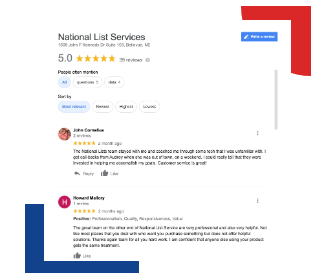
People like to do things for other people so a great way to collect reviews is to just ask for them! A follow up survey email after they buy from you is an easy way to this. Ask them specific, easy to answer questions about things such as: service response times, shipping times, product or service quality etc.
Make it easy to review you. No one has time to take 10 minuets following a complicated review survey with long required written answers. People are doing you a favor by reviewing you, show that you appreciate it by being respectful of their time and effort. Take out pain points of the review process: go through and make sure there aren’t any unnecessary steps or questions. Double check the user interface, id it easy to figure out?
Incentivizing your reviews (specifically ecommerce) is a big no-no! As temping as it is to show your appreciation for the review with a coupon or free shipping, or something: don’t. Both Google and Yelp have policies in place banning incentivized reviews. They will take the reviews down and give you a slap on the wrist.
What To Do With Reviews Once You Have Them
You have the reviews – now what? Here’s 2 ways to leverage them!
- Show them off
Let your reviews sell your product for you. Happy previous customers can be a great way to convince your potentials to buy from you! Show off your reviews on your home page with Google review widget or prominently feature some reviews as part of the design. Don’t forget to ask for permission first if you are going to highlight a specific review, especially if you are going to use their picture. - Engage with reviewers
let them know you appreciate them! It doesn’t have to be a big deal, simply liking the review or just saying thanks goes a long way. That little bit of effort can turn a happy customer into a loyal one. And a lot of marketing automation software makes replying to reviews across multiple platforms easy.
Do you have a favorite customer review?
While we are on the subject… leave us a review! 😜
Get the most out of Instagram – How?
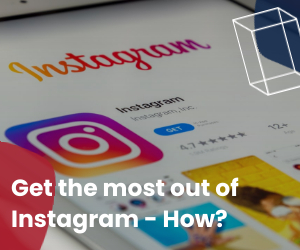
Instagram can be a confusing and overwhelming beast. It has its own constantly changing algorithm and culture that separates it from any other social media. Getting Instagram to work for you takes time, effort, insight, and unfortunately: intuition. What do you need to get the most out of Instagram?
Being an Instagram pro requires knowledge of 3 things: its culture, its algorithm, and your own analytics of those 2 things. Understanding the culture and the algorithm don’t do you much good if that knowledge is disconnected from your own follower and user data.
Instagram Culture
The biggest thing to remember is that Instagram is not Facebook. Facebook is for information, Instagram is for connections. And Instagram’s user base is generally younger than its big brother Facebook. More than 50% of Instagram users are between 18-35, while more than 60% of Facebook’s user are over 35. Therefore, these users have grown up with social media, including Instagram, and have shaped its function and culture. (For example, by the time my friends and I were old enough to have social media, Facebook was already too big and felt like something elusively for our parents. For a long time, Instagram was the only social media any of us had.)
Although Instagram is great for showing off products, the thing it is best at is highlighting your brand’s culture and personality. It is not enough anymore to have a good product available anymore, your consumers need to feel connected to your brand. 56% of Gen Z consumers say that having shared passions and perspectives is a major factor when it comes to their engagement with a brand.

And 49% of young consumers say they will evangelize a brand they feel represents their values, likes, and personality.
Don’t be afraid of incorporating causes you care about into your brands personality! 72% of consumers want the brands they care about to be positive contributors to society. We’ve seen in recent years that many brands (especially smaller companies) connect their core brand to a charity or cause they care about. Younger consumers are 69% more likely to buy from a brand that contributes to a cause.
The Algorithm
According to Instagram, they decide to show your content based on 6 factors:
#1: Interest
#2: Relationship
#3: Timeliness
#4: Frequency
#5: Following
#6: Usage
The first three are somewhat self-explanatory. Instagram shows you things based on what you’ve liked in the past. They highlight posts from people they’ve decided are close to you: people whose content you most engage with, the people who tag you, the people you DM etc. Instagram also cares about when you post. Keeping track of your analytics can give you a good idea about when the best times to post for you are.
#4 Frequency

Frequency isn’t about how often you post but instead about how often interact with the app. The more often you check your Instagram feed the more likely your feed will be chronological because they are always trying to show you the newest content available. This is helpful to understand what type of Instagram users your followers are. If they don’t check the app that often, then it will be harder to have your posts seen. Building up the other 5 components to the algorithm will be all the more important.
#5 Following
Instagram assigns value to follower counts in a couple different ways. First, is simple: the more followers you have the more likely your posts will be highlighted in your follower’s feeds. However, they also look at your follower’s engagement levels. If you have a lot of ghost followers that don’t interact with you, then they could actually be hurting you. Another thing to consider, the more people your followers follow the more competition for space in their feed. Do your followers follow a lot of people? Understanding that can help you decide if you need to adjust where you focus your efforts.
#6 Usage
This is how Instagram qualifies the amount of time spent on the app. The more time spent on the app, the deeper into its catalogs they have to pull from to show content. You can use this to your advantage by using hashtags or developing content that matches with the interests of Instagram’s heavy users.
How do you get the most out of Instagram?
What Can Your Team Do Stay Productive?
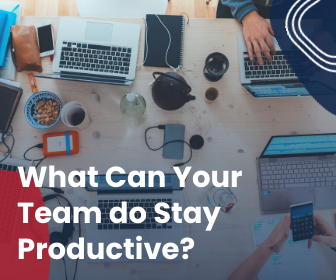
When working as part of a team, how we work alone as well as how we work together contributes to productivity and efficiency. When employees are stressed or exhausted, engagement and productivity dip and the whole company can feel the effects. It can be hard to stay productive.
Managing stress has been a challenge for a lot of people this year. In Asana’s Anatomy of Work 2021 study, 71% of workers said that they felt burnt out at least once in the last year. Also, 42% rated their stress levels as high or very high. 😳
So, what can you as an individual and you as a team do to maintain your efficiency and productivity?
What Can You Do as A Team to Stay Productive?
Unfortunately, work related stress often has to do with environment. When one person is feeling burnt out on your team, it can bring the whole team down. What can you do to create a less stress inducing work environment?
Talk It Out
Ewww, right? However, it’s impossible to know what is wrong or how you can help a situation if you don’t know at the problem is. Take in interest in people you work with. Is there anything going on in their life that might be adding stress? Is a process or workflow just not working for and its making things difficult?
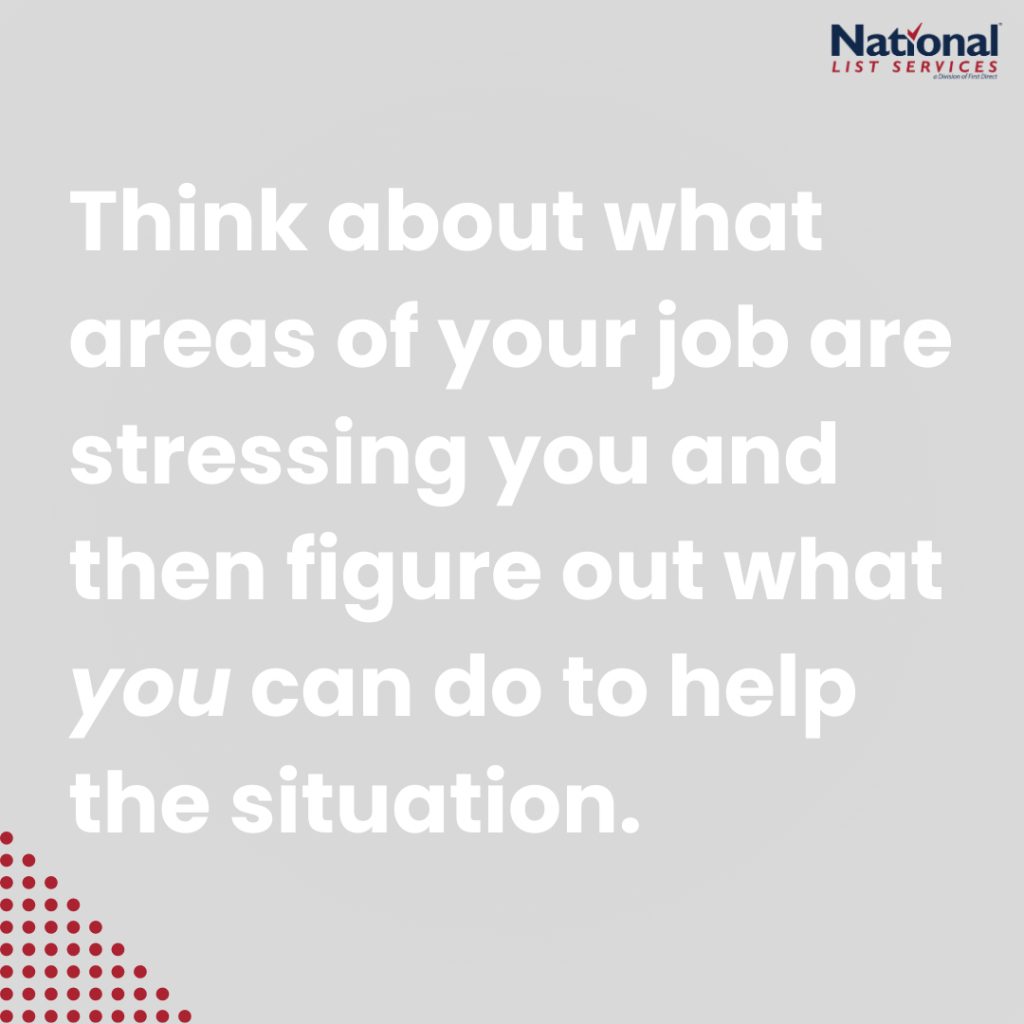
Once you understand how your team is feeling, don’t disregard it! See what you can do to make things run smoother.
Take Control Over Your Situation
We are all responsible for ourselves. If you are lucky enough to have anatomy in your job, use it! Think about what areas of your job are stressing you and then figure out what you can do to help the situation. For example, do you struggle with being productive in the afternoons because you hit a massive exhaustion wall? Could you be hitting that dip because you constantly don’t get enough sleep? Or does coffee make you crash? Those are things that you have control over and can change.
And after this year, more and more companies are realizing that giving their employees flexibility over schedule and in some cases, whether they want to work from home, actually increases productivity!
Minimize Distractions
The Asana study mentioned early found that “work about work” took up 60% of most employee’s days. That “work about work” is things like, meetings about processes, communicating about specific tasks, switching between tools, waiting for apps to load, searching for information, following up with team members about a project’s status, and managing shifted task priorities. A lot of those things are things that you don’t have control over. However, dealing with tasks like that can quickly give you the feeling of being on a work sized hamster wheel. That’s partly because “work about work” doesn’t feel like you are accomplishing anything.
What can help you feel in control? Figure out the right processes and find the right tools. If you can work with your team to put an effective process in place for dealing with collaborative projects. Part of that involves finding the right tools. There are so many workflow and team management tools available now that it shouldn’t be difficult to find one that works for you and your budget. (We are big fans of Teams/Planner and good old fashioned white boards.)
Time Management
Time management single handedly has the biggest impact on work stressor and burn out. Good time management can drastically increase your productivity and give you more time to focus on other aspects of your life. A healthy work-life balance will help aspects of your life, including reducing stress!
Connect Your Targets to Big Goals
Time management is about getting the work done, it about getting the right things done at the time. A big part of understanding and prioritizing what’s most important is know what are your goals. And if you work for a company, what its goals are. A recent study found that only 26% of employees understand how their work relates to the overall company goals. How can you know what daily targets to set if you don’t understand where you are trying to go?
Only 26% of employees understand how their work relates to the overall company goals
This goes back to talk it out. If you have questions, ask! And if you are in a management position, work with your employees so everyone understands what they are doing to help the company reach its goals!
Prioritize and Organize
Its critical to understand what tasks are most important. Inevitably things change throughout the day; deadlines move and priorities shift. If you understand what’s most important in the grand scheme, however, it can make adapting to those changes easier. In the Asana study, they found that 29% of employees cited confusion on task priorities as a contributing factor to their burnout.

There are many different methods to prioritizing and organizing your daily tasks. The “Eat The Frog” method (named after the famous Mark Twain quote) encourages you to take care of the big or complex tasks first thing in the morning. This way you are productive right out the gate and don’t have a big task hanging over your head all day. Once you’ve eaten the frog you can move to other things.
Another popular method is David Allen’s “Getting Things Done” method. The first step in this method is write everything you need to get done down. Once you have an overview it’s easy to see what tasks are important. Writing it all down and putting it one place frees up brain power and lets you focus on actually getting the stuff done.
Plan Ahead
Writing down your targets for the next day before you finish for the night or as you think of it, helps you feel on top of the day as soon as it starts. Spending a few minutes to plan out tomorrow’s tasks is way easier than spending the first part of your day scrambling to remember what was a priority to get done that day. This will also help your work life balance because you don’t have to keep thinking about all you have tomorrow.
Say “No” or Delegate
This is a struggle, we know. But one advantage of having clear, prioritized tasks, is that you can see when a task is not a priority or not one you have time for. It’s easier to explain why you are saying no if everyone knows what your current priorities are. Sharing your clearly defined priorities with your team gives everyone more clearly. This is something that we have found to be successful. In our morning meeting we often go through what everyone’s priority tasks for the day are. By doing this, we know what each of us needs to be focusing on and how much a priority it is to reach our company goals. It also makes it easier to see where we could help.

Knowing what your team’s priorities are, can also make it easier to delegate tasks. Just because something is a priority task for you doesn’t mean it’s not important! Help it get to the right person and that benefits everyone.
Audit Your Tasks
Is there anything on your plate right now that doesn’t align with your goals? Ask yourself, is this task not a priority for today anymore? Or is it not a priority at all? If the task is still important but keeps getting moved to the bottom of your priorities, ask yourself if you are the right person to be handling it?
Another aspect of auditing task is looking at how you view the task. Are you procrastinating the task because you don’t really want to do it? It’s easy to add time to situations if want to avoid the task. However, tasks don’t usually take care of themselves. (wouldn’t that be nice?) procrastinating the task will just make it worse. And often, when we finally do something, we’ve been procrastinating, we find it wasn’t that difficult in the first place!
What have you found successful in dealing with work stress? Any time management tricks you swear by?
Data, Analytics, and Insight: What’s The Difference?

Data, analytics, and insight is kinda our thing. However, it seems like a lot of people use those words almost interchangeably. Are they the same thing? What do they mean for your business?
Data = The Information
Analytics = The Connections
Insights = The Actions
Data is pure information. For example, data about your current customers (first party data) is information such as average age, gender, location, or occupation. Analytics are the patterns that connect those things.
That would mean that data is knowing that you sent over 20,000 emails in June 2021. Analytics are knowing that your average open rate is 22.8% and your click through rate is 0.09%. The analytics show you a clearer image of the data.

I heard a really great illustration about this recently. Thinking about data and analytics can be compared to looking at an impression painting (like this one: The Cliff of Aval Etretat by Claude Monet.) Up close, all you see are the brush strokes and colors. That’s like looking at raw data. You can see what it is made off. But if you back up a few feet and look at the painting, you can see what the image actually is. Similarly, looking at analytics gives a more complete view of your data.
What’s the advantage of Insight?

Insight is the action connected to the analytics. Taking the example of 20,000 emails, insight would taking the knowledge that you have a great open rate but a terrible CTR and doing something about it. Applying insight means changing your call to actions or link to generate a better click through rate.
What’s another way to apply insights?
Building a Buyer Persona
What is a buyer persona? In the simplest terms, a buyer persona is exemplification of all of your customers. The most common way to do this is to create a fictional person that has the most common demographics and interests of your customers. Basically, you take data, analyize it, and then use insight to act.
Ask yourself: What are your customers common denominators? (Data) What do they want? (Analytics) What are their pain points? (Analytics) Once you have this information, it can be combined into a person you can picture makes it easier to connect with the crowd. (Insights)
Jim Edwards from Funnel Scripts explains buyer personas as the main character in the story of your company’s customer journey. Although your company already has its own personality, (or brand) in order to success the narrative you’re telling haws to focus on what the customer wants and needs. You are there to help them get to where they want to go. Jim Edwards example buyer persona was for a weight loss company. Their buyer persona is a middle-aged unicorn named Fred who needs to lose weight if he wants to be successful at his quests. Fred is the main character in the story. The weight-loss company is there to help him.
What data do you need to create a buyer persona?
Like any good main character, your buyer persona needs to be well rounded. It needs to have a purpose, interests, goals, and struggles. It’s especially important to know what motivates them so you can help them.
Here’s some common buyer persona attributes.
- What are their basic demographics?
What gender to they identify as? How old are they? Where do they live? What is their relationship status? Are they educated? - What do they do for work?
What’s their job title and description? But more than that, are they a decision maker? What do they influence at work? - What are their interests?
Do they have hobbies or interests? What do they do in their free time? Are they part of a community? - What do they want and why can’t they have?
This a big thing for figuring out what you can do to help them! What are their goals and dreams? What are their pain points? Like, what keeps them up at night? - Why wouldn’t they buy from you?
What’s stopping them from buying from you? What objections may they have? - What ways would they prefer to interact with you?
Do they use social media? Do like a particular social media? Is a phone call the best way to reach them?
Using data, analytics, and insight is essential to having a successful business. What ways to you implement data in your business?
How to get past creative blocks
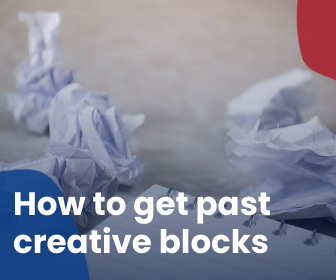
Whether or not you think of yourself as creative person, all jobs required creative thinking. And especially as marketers we produce a lot of content, for ourselves and our clients. However, it can be difficult to continue to produce high-quality content when we don’t feel creative or inspired.
Fortunately, there are things we can do to get over (or prevent) creative blocks.
Take a break
Remember your brain is a muscle and needs rest time. During our break time out brains continue to process ideas. Therefore, breaks can boost our creativity and give us new ideas.
One of the most effective ways to get over a creative break is to take a break outside. The University of Michigan found that walking outside (preferably in nature) improved attention spans and memory performance over 20%! They found that walking outside, no matter the temperature, had the same mental effects as meditation.
Don’t force it
Our brains don’t have an endless well of content ideas. And we can’t force ourselves to be creative. It’s okay to just walk away. One way to keep to refilling the well is to just do something else. Change your scenery, have conversations, read books or articles, watch a movie or show. Diversity of other creative inputs will refill your own creativity.
Inspiration can be found anywhere but it’s easier to find it when you are being active. Take opportunities to use other parts of your brain and senses! It could even be a monotonous task that you normally don’t enjoy, but the switch up will help get the juices flowing.
Focus on the process, not on the results.
Making content isn’t just about the result. There are many steps along the way. Finding joy in all the steps can make it easier to stay motivated.
Befriend your inner critic
There will be bumps in the road. It impossible to make perfect content, the first time, every time. Taking risks will help sharpen your skills and build your confidence. Don’t afraid to befriend your inner critic. Not letting yourself fail or telling yourself that you aren’t able to succeed both result in failure. It ok! Your inner critic and any failure is how you learn and grow. The fast you acknowledge your critic and failure, the faster you’ll be able to get past the block and make something you are proud of. It’s all part of the process!
“It’s through mistakes that you actually can grow. You have to get bad in order to get good.”
Paula Scher
Listen to yourself
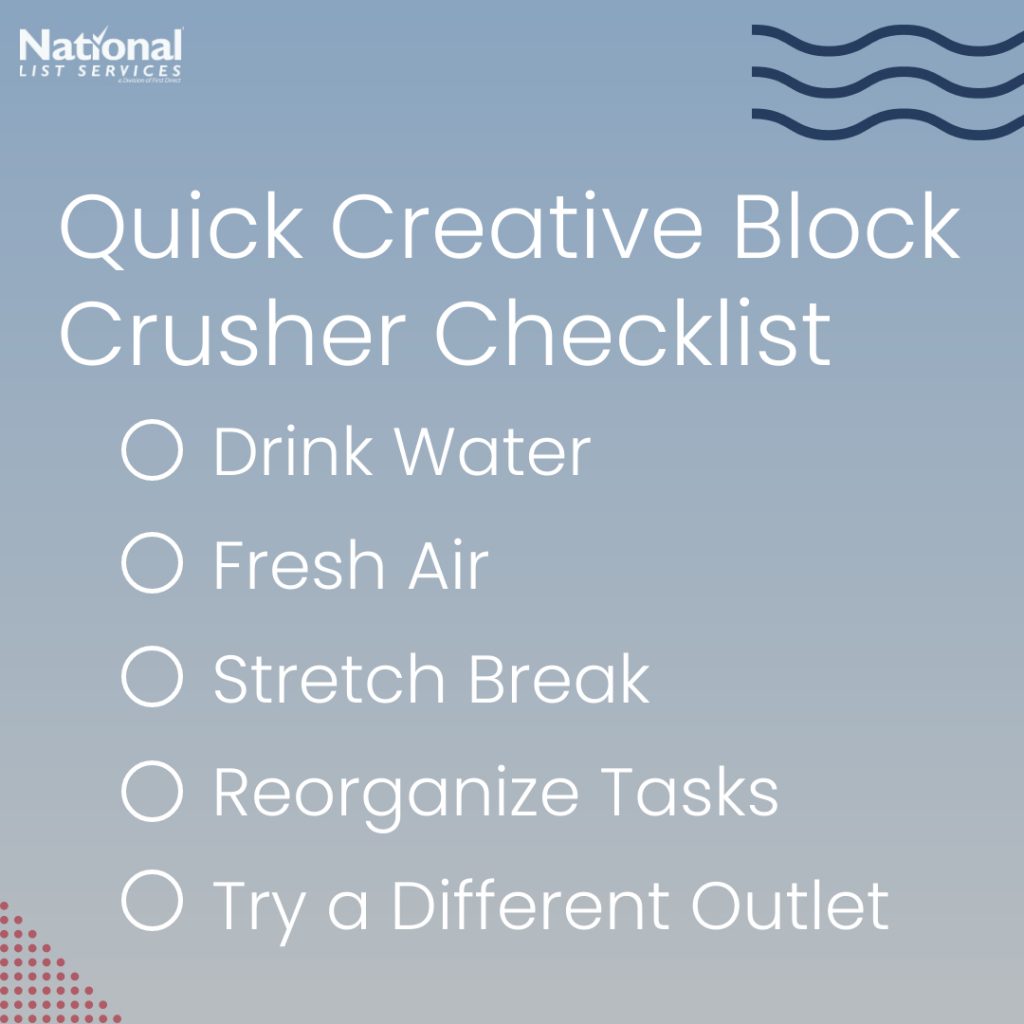
Although it may feel like it, creative blocks don’t just appear out of nowhere. Often, a lack of creativity comes from not taking care of your physical or mental health. It’s difficult to feel motivated and inspired if you’re exhausted.
So, check in on yourself. Are you getting enough sleep? When was the last time you drank water? It’s easy to want to power through and get things done but that mentality will come back to bite you later.
Audit your task list
Sometimes a task can seem so big and overwhelming that it’s hard to know where to start and we just don’t. It can paralyze your creativity. The easiest solution is to organize and prioritize your tasks. Cut the task into smaller chunks if you need to.
Ways to divide tasks
There are many different methods to prioritizing and organizing your daily tasks. The “Eat the Frog” method (named after the famous Mark Twain quote) encourages you to take care of the big or complex tasks first thing in the morning. This way you are productive right out the gate and don’t have a big task hanging over your head all day. Once you’ve eaten the frog you can move to other things.
Another popular method is David Allen’s “Getting Things Done” method. The first step in this method is write everything you need to get done down. Once you have an overview it’s easy to see what tasks are important. Writing it all down and putting it one place frees up brain power and lets you focus on getting the stuff done.
“Great things are not done by impulse, but by a series of small things brought together.”
Van Gogh
Plan ahead
Writing down your targets for the next day before you finish for the night or as you think of it, helps you feel on top of the day as soon as it starts. Spending a few minutes to plan out tomorrow’s tasks is way easier than spending the first part of your day scrambling to remember what was a priority to get done that day. This will also help your work life balance because you don’t have to keep thinking about all you have tomorrow.
Another aspect of auditing task is looking at how you view the task. Are you procrastinating the task because you don’t really want to do it? It’s easy to add time to situations if want to avoid the task. However, tasks don’t usually take care of themselves. (wouldn’t that be nice?) procrastinating the task will just make it worse. And often, when we finally do something, we’ve been procrastinating, we find it wasn’t that difficult in the first place!
What is your go-to way to get past creative blocks?
Is the current office model outdated?
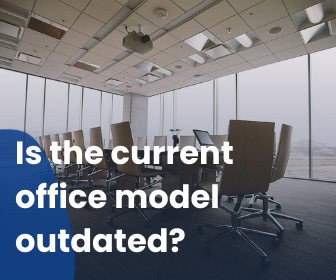
Remember like, a year ago when lots of big businesses were saying they weren’t going to require their employees to go back to the office? And then, inevitability they did. A lot of big companies and whole industries (like, banking and wall street,) have gone back to the office. What did we learn from corporate’s ‘year-at-home’? Are industries and office culture really going to adapt to modern WFH life? Or is the 9-5, 5-day-workweek here to stay?
Advantages of WFH
At the start of the pandemic, many companies feared that working remotely would cut done on productivity. After a year, that has proven not to be the case. Many employees feel more productive working remotely. 82% of senior executives surveyed reported seeing productivity levels either stay the same or increase because of working from home. WFH has cut down on something surprising: innovation.
82% of senior executives surveyed reported seeing productivity levels either stay the same or increase because of working from home.
WFH lowers office costs and shortens commutes. Employees like the freedom. 69% of respondents to Microsoft’s WFH survey said that the main reasons liked working remotely were: dressing more casually, being able to personalize their workspace, and having their pet by their side. Working from home also cuts down on casual workplace interruptions. That same Microsoft study found that before WFH, workers felt like 52% of their workday was wasted due to unnecessary disturbances. That number has fallen to 41% since the beginning of the pandemic.
Michael Parke, a professor at the University of Pennsylvania, who worked on the Microsoft study, said: “It seems that employees are able to hunker down and get less distracted while working remotely… However, the cost seems to be a loss of sense of purpose, which at work, is largely driven through strong and cohesive relationships and seeing how your tasks have impact on others.”

“However, the cost seems to be a loss of sense of purpose, which at work, is largely driven through strong and cohesive relationships and seeing how your tasks have impact on others.”
Michael Parke
Disadvantages of WFH
Working remotely means it’s hard to connect with coworkers, both for formal communication as well as for personal connections. This has had a direct impact on companies’ ability to innovate. The Microsoft study reported that the percentage of leaders who felt that their companies were innovative dropped 16% in 2020. Without sharing a physical space brainstorming and collaboration is more difficult. It’s harder to come up with new ideas as well as enact them.
The overnight and “temporary” switch to working remotely has created many challenges for employers and employees alike. WFH on this scale is such a new thing that solutions to challenges and long-term repercussions are still very much unknown. Being aware of challenges as they come up is the only way for companies to work on effective solutions.
What About A Hybrid Office?
As companies transition back to the office, many bigger companies aren’t seeing it as all or nothing: office vs. WFH. Many companies are trying a hybrid workplace. For example, the London based bank, StandardCharter is pushing and incentivizing a hybrid office model across its global offices. They plan to create smaller office hubs and give employees the choice to work at the office or at home. They are suggesting that employees meet at the office regularly to check in and collaborate. Building We-Work style office spaces will help solve technology deficiencies in their branches in developing countries and will lower costs across the board.
Facebook is also moving to a more hybrid work model. However, they are allowing it more than promoting it. Their current policy is that any full-time employee can request to WFH. Some jobs such as data center maintenance and hardware development will not be allowed to work remotely. They are also planning to adjust salary based on where you decide to work. It is a lot cheaper for the employee to work remotely from a city in the Midwest. (For example, the cost of living in San Francisco, CA is 199.8% higher than it is here in Omaha, NE.) Facebook is going to open all their US offices up to 50% capacity in the fall. Meaning, that almost 30,000 employees will continue to work remotely.
How has the last year of WFH impacted entrepreneurs?
Many people took the opportunity of disrupted work to start new businesses. Many people liked the freedom and flexibility that working from home offered and decided to leave their corporate jobs and pursue entrepreneurship.
“Americans submitted an average of 111,000 applications for new businesses per week between the end of June 2020 and the beginning of September 2020, the most applications submitted per week since 2007.”
U.S. Census Bureau
How do many people feel about going back to the office?
A lot of banks and tech companies went back to the office last week. How do their employees feel about it after working from home for a year and a half? Of the over 1,200 employees and 133 executives surveyed at the end of last year, 55% said they would prefer to still work remotely at least 3 days a week. Along with the loss of flexibility and other perks WFH offers, going back to working surrounded by people can be daunting. A scary as it may be, it will show your employer and teammates your commitment to your job and flexibility in dealing with transitions. Which will be really appreciated! If you are feeling anxious about the return, talk to your boss. Your company may be more open to a hybrid office than you think.
There is never going to be a complete consensus to the question: is WFH better? Every business, every office, and every employee will have a different opinion and method that works best for them. It doesn’t really matter what your company decides to do, as long as it’s the right fit for you.
